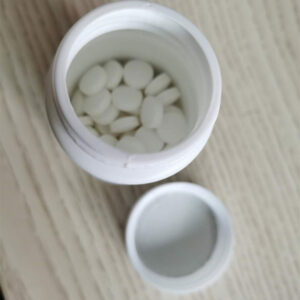Description
Sodium thioglycolate CAS 367-51-1
Melting point |
>300 °C(lit.) |
Water solubility |
609.1g/l |
Appearance |
Light yellow to dark red liquid |
Purity |
40%min |
Stability |
stable |
What is sodium thioglycolate?
Sodium thioglycolate (TGA) is an important flotation inhibitor. It is used as an inhibitor of copper minerals and pyrite in the flotation of copper-molybdenum ore. It has obvious inhibitory effect on copper, sulfur and other minerals, and can effectively improve the grade of molybdenum concentrate. Sodium thioglycolate as an effective inhibitor of a new type of sulfide ore has been successfully used in the production of molybdenum for many years and has completely replaced the highly toxic inhibitor sodium cyanide.
Sodium thioglycolate Usage
1. In the application of copper-lead separation, sodium thioglycolate, as a non-toxic, small molecule inhibitor, has a good inhibitory effect on chalcopyrite, and can be used in the separation process of copper-lead mixed concentrate to achieve Separate copper and lead. The de-drugging effect of the copper-lead mixed concentrate, the type and dosage of the collector during separation, the pH value of the pulp, the dosage of sodium thioglycolate and other factors have an important influence on the separation effect of copper-lead, but the dosage of sodium thioglycolate is The most important influencing factor is that when the dosage is appropriate, the separation of copper and lead can be better achieved. When the dosage is too large, sodium thioglycolate has an inhibitory effect on both. Inhibition mechanism: The infrared spectrum curve after the action of sodium thioglycolate with chalcopyrite and galena is bifurcated and shifted, and there are symmetric and asymmetric stretching vibration absorption valleys of-CH2-and asymmetric stretching vibration of-COO- Absorb the valley and so on. In the infrared spectrum curve after washing, the absorption valley of these characteristic groups became weak but not completely disappeared, which proved that the physical adsorption and chemical adsorption of sodium thioglycolate on the surface of chalcopyrite and galena coexisted.
2. Activate sphalerite with copper sulfate in high pH slurry, use lime as an inhibitor of pyrrhotite and pyrite, supplemented by sodium thioglycolate, which can effectively achieve zinc-sulfur separation. Industrial production trials have achieved a grade of 45.10 % Of zinc concentrate, the operating recovery rate is 94.39%. Sodium thioglycolate is a moderately toxic agent, which has a good inhibitory effect on pyrite and pyrrhotite. It can completely replace the highly toxic cyanide and realize the zinc-sulfur non-cyanide separation process, which not only guarantees the zinc concentrate The production indicators of grade and recovery rate can meet the national environmental protection requirements. Sodium thioglycolate has little inhibitory effect on sphalerite. Since sodium thioglycolate is used, it has maintained a good production index.
Sodium thioglycolate Packaging and Shipping
Packing: 200kg/drum
Sodium thioglycolate Storage
Storedin sealed container in a dark place.






Reviews
There are no reviews yet.